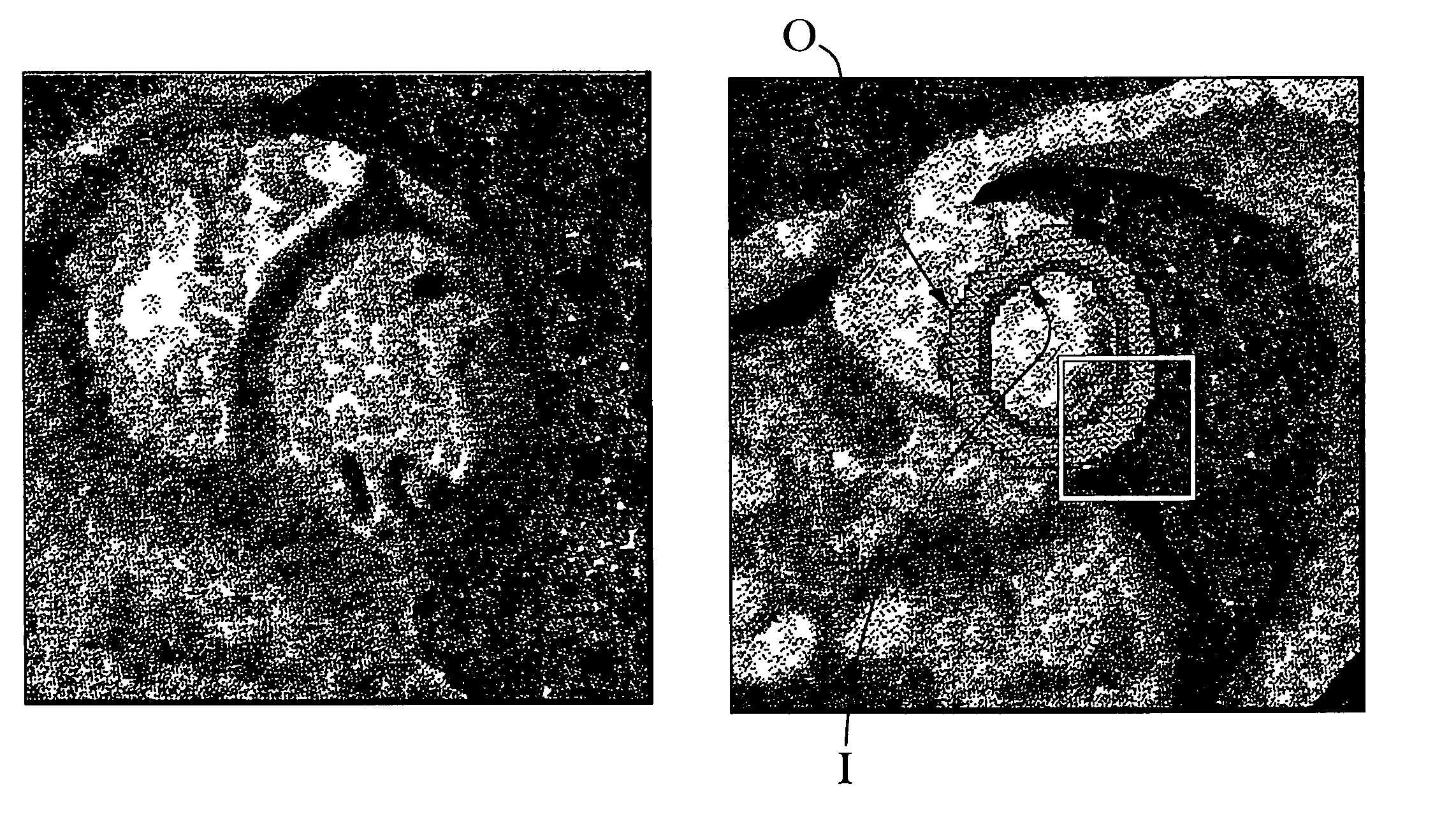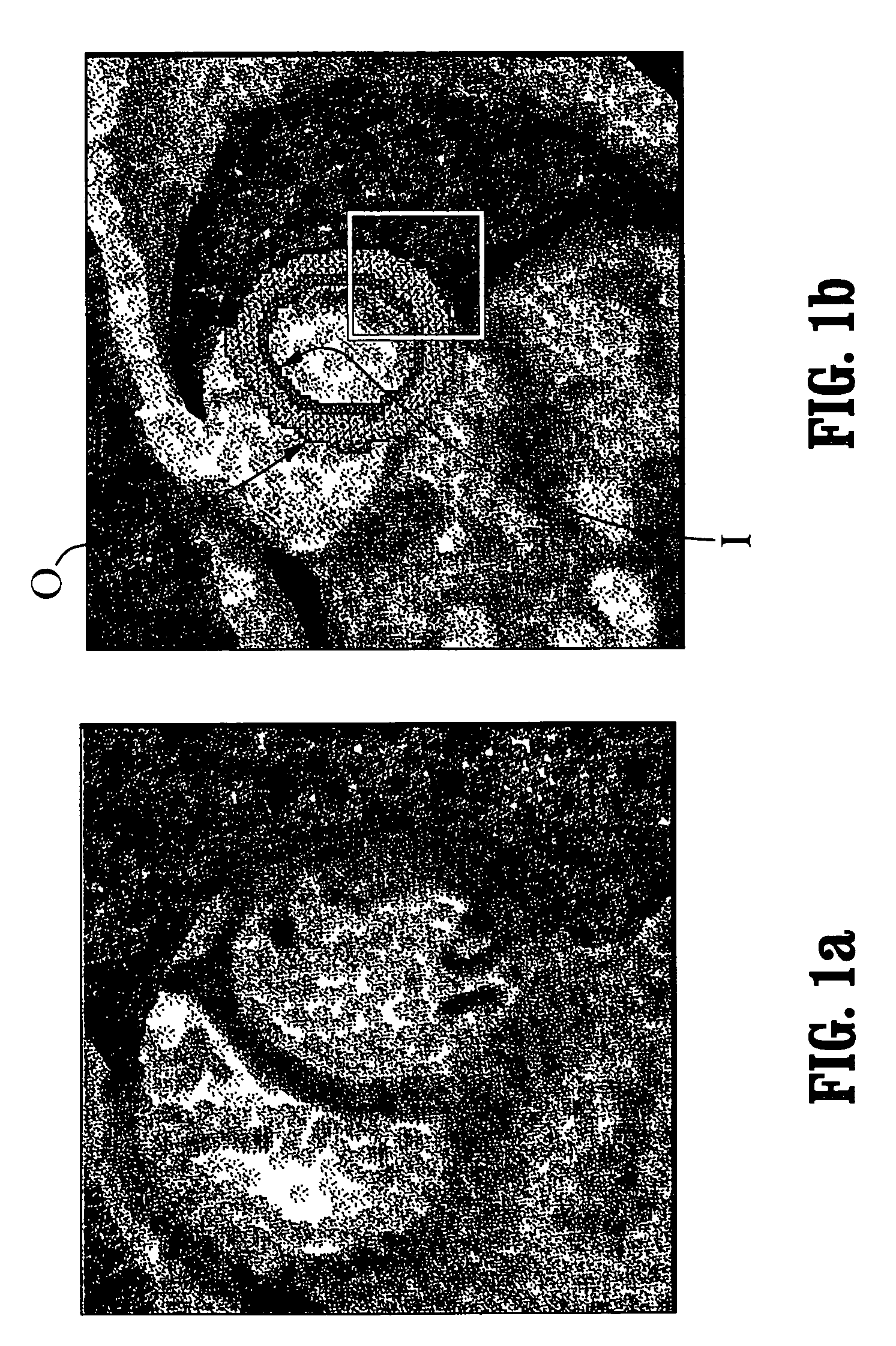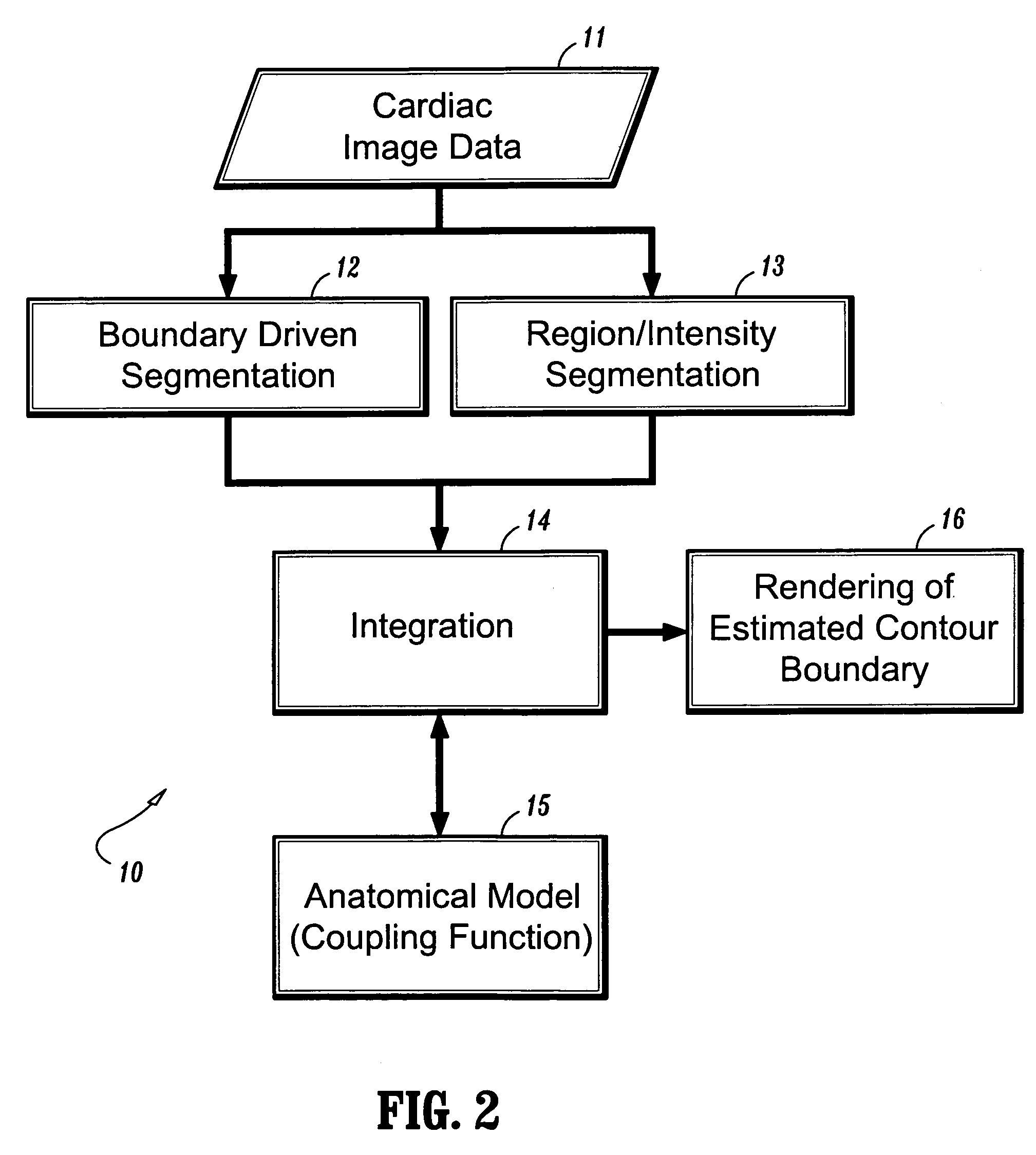Variational approach for the segmentation of the left ventricle in MR cardiac images
a technology of cardiac images and variables, applied in the field of system and method for segmenting cardiac images, can solve the problems of model sensitive to the initial conditions, physiology, cardiology, and cannot fully exploit the prior knowledge available in other domains, and achieve the effect of avoiding noise or physical corruption, avoiding the occurrence of abnormalities, and avoiding abnormalities
- Summary
- Abstract
- Description
- Claims
- Application Information
AI Technical Summary
Benefits of technology
Problems solved by technology
Method used
Image
Examples
Embodiment Construction
[0030]The present invention is generally directed to cardiac segmentation for MR imagery. An objective is to recover the left ventricle and, in particular, the myocardium that is the area between the epicardium (i.e., the inner most layer of the pericardium (sac that surround heart) and the endocardium (the thin endothelial membrane lining the cavities of the heart.) The context of a segmentation application according to the invention is shown in FIG. 1.
[0031]FIG. 1a is an exemplary 2-d image of the heart, and in particular, a 2-d slice of the heart showing a cross-section of the left ventricle. The dark ring in FIG. 1 depicts the myocardium (muscle) that constitutes the wall of the left ventricle. In accordance with a preferred embodiment of the present invention, a segmentation method is based on two evolving interfaces as shown in FIG. 1b, the endocardium [∂RI—inner contour] or inner wall (denoted I) of the myocardium and the epicardium [∂RO—outer contour] or the outer wall (deno...
PUM
 Login to View More
Login to View More Abstract
Description
Claims
Application Information
 Login to View More
Login to View More - R&D
- Intellectual Property
- Life Sciences
- Materials
- Tech Scout
- Unparalleled Data Quality
- Higher Quality Content
- 60% Fewer Hallucinations
Browse by: Latest US Patents, China's latest patents, Technical Efficacy Thesaurus, Application Domain, Technology Topic, Popular Technical Reports.
© 2025 PatSnap. All rights reserved.Legal|Privacy policy|Modern Slavery Act Transparency Statement|Sitemap|About US| Contact US: help@patsnap.com



